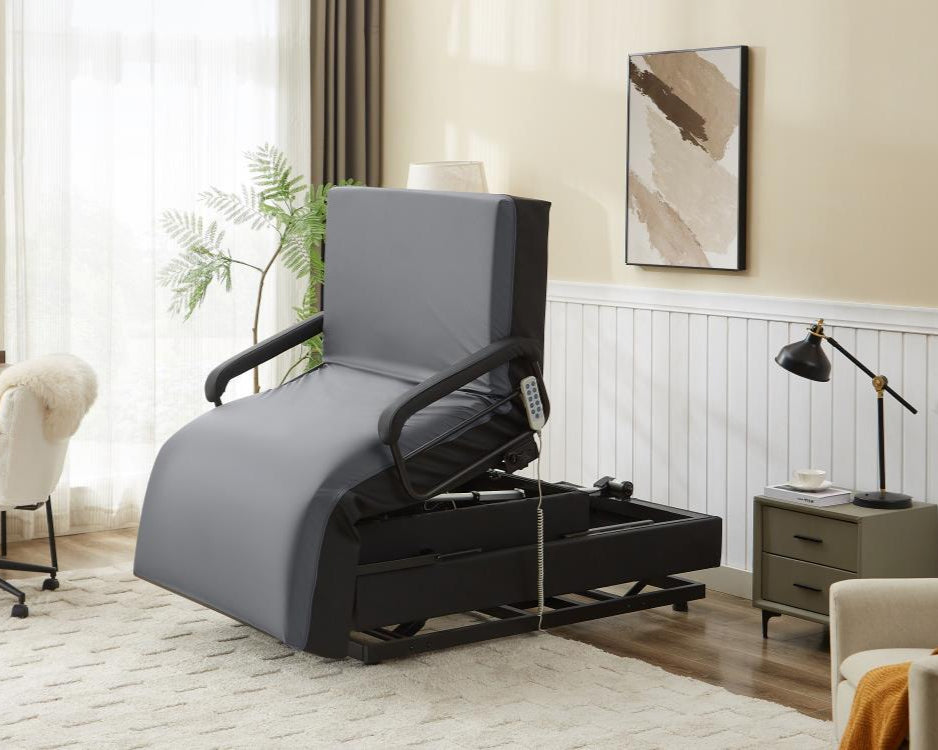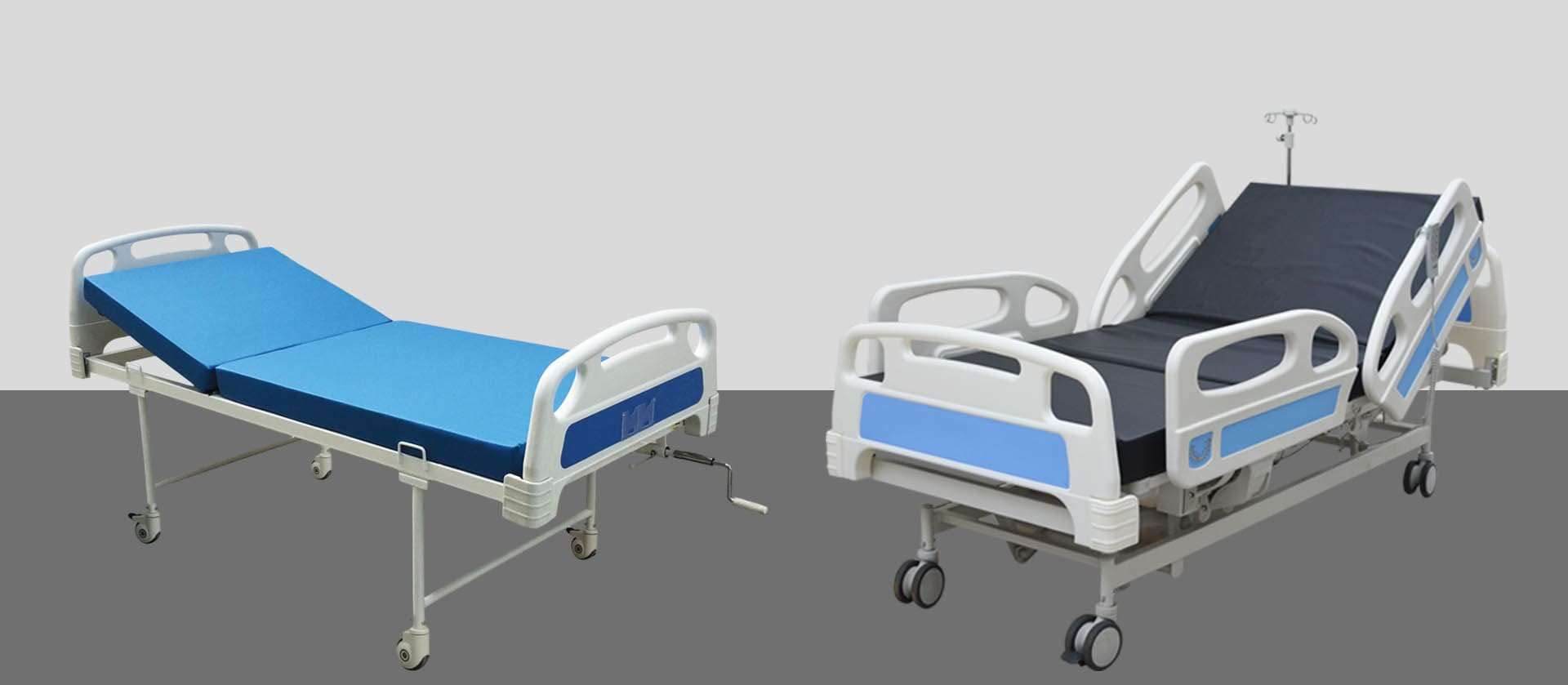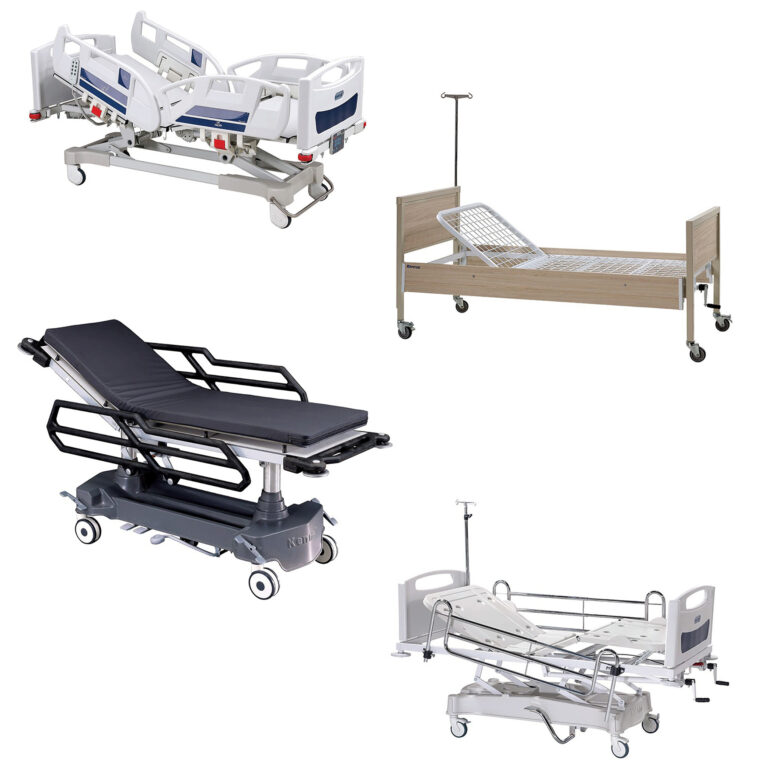Some Of Hospital Beds For Home Use
Some Of Hospital Beds For Home Use
Blog Article
5 Simple Techniques For Hospital Beds For Home Use
Table of ContentsHospital Beds For Home Use for BeginnersThe Definitive Guide to Hospital Beds For Home UseThe Only Guide to Hospital Beds For Home UseThe 9-Second Trick For Hospital Beds For Home UseThe Greatest Guide To Hospital Beds For Home UseHospital Beds For Home Use - QuestionsAll about Hospital Beds For Home Use
There are three major kinds of medical facility beds: guidebook, semi-electric, and fully-electric. These beds utilize hand cranks to readjust the bed's elevation and raise and decrease the head and the foot.
Semi-electric beds have an electrical motor to elevate and lower the head and foot sections of the bed. People and caregivers readjust the placing by pushing switches using a hand necklace. The height of the bed is adjusted by hand with a hand crank. Full-electric beds have an electric motor that can raise the head and foot areas of the bed along with the entire height and positioning of the bed.
3 Simple Techniques For Hospital Beds For Home Use
Some versions can also relocate into more placements, such as the Trendelenburg (tilt) setting. There are numerous kinds of medical facility beds, each designed to fulfill particular patient requirements. Here are some common types: This is the most common kind of hospital bed, developed for basic medical use. It has a handbook or electrically adjustable headrest, footrest, and elevation.
Lower to the ground than a standard bed. This type of bed is made for larger individuals, with a wider framework and greater weight ability than a basic bed.
This sort of bed is designed for seriously ill clients who require open surveillance and specialized clinical equipment such as ventilators and mixture pumps. This kind of bed is developed for usage during labor and distribution, with flexible placements and functions to support the mom and infant during the birth procedure.
Everything about Hospital Beds For Home Use
Multiple function and the accessories do broadening grip to different parts of the vertebra and the extremities without moving the human body. These are simply a few examples of the kinds of medical facility beds available. The particular kind of bed utilized will depend upon the individual's problem, clinical needs, and various other variables.
Below is the important things you require to recognize. A one-function healthcare facility bed is a medical bed that enables an individual to relocate just the head or foot section up or down. A 2 feature health center bed usually refers to a kind of medical bed that has 2 adjustable features to help individuals in health centers or care facilities.

Getting My Hospital Beds For Home Use To Work
A 7-function ICU bed is a kind of medical bed that offers a number of flexible features to support critically ill patients in a critical care unit (ICU) (hospital beds for home use). The 7 features commonly include: Back-rest modification: The backrest can be gotten used to different angles to aid the individual rest up or rest easily
Height adjustment: The bed can be elevated or decreased to make it much easier for clients to enter and out of bed, and for caretakers to offer care. Trendelenburg position: The entire bed can be tilted to advertise blood flow and blood circulation in the body. Reverse Trendelenburg placement: The bed can additionally be navigate to this website slanted in the opposite direction to promote blood circulation and flow in the upper body.
While even more inexpensive than electric models, these beds need exertion for adjustments. The major advantages of hands-on beds are their affordability and reliability, as they do not count on electricity. Nevertheless, the demand for manual initiative can be a constraint in scenarios where fast modifications are essential or where caretakers encounter physical challenges.
Fascination About Hospital Beds For Home Use
They are fit for patients who require minimal repositioning for convenience or medical needs. Semi-electric medical facility beds supply an equilibrium of handbook and electric controls. The head and foot areas are usually readjusted with electric controls, while the elevation is adjusted manually. These beds provide an optimal center ground between handbook and fully electric options, providing ease of usage without the full cost of electrical versions.
Semi-electric beds are appropriate for people that require moderate adjustments to the head and foot sections yet can manage without constant elevation modifications. This makes them a cost-effective remedy for those looking for convenience and ease without the requirement for constant repositioning. Completely electrical hospital beds feature electrical controls for seamless adjustments to the elevation, head, and foot sections.
Specialty health center beds, such as ICU beds, long-term care beds, and bariatric beds, are carefully created to deal with specific clinical demands. These beds provide customized take care of varied person teams, improving both results and comfort. In the adhering to sections, we will certainly explore the main types of specialty healthcare facility beds, outlining their particular benefits and applications.
With years of experience in making electrical linear actuators - hospital beds for home use and close cooperation with the healthcare market, TiMOTION is well-positioned to supply reliable healthcare options. Our vertically incorporated company handles every step of the production process, from layout to actuator setting up, ensuring we supply phenomenal worth and tailored solutions tailored to your particular needs
What Does Hospital Beds For Home Use Mean?

To get more information about integrating these technologies into your items, contact us today. Additional reading:.
Data is sourced from the Medicare Price Record.

The Buzz on Hospital Beds For Home Use
A hospital bed is a bed developed especially for clinical purposes. It is not only an area for patients to rest, but likewise a system for medical operations. Unlike ordinary home beds, healthcare facility beds generally have adjustable features, which can promote clinical team to make different changes according to the requirements of clients, such as transforming the height, disposition, and support angle of the back and legs of the bed.
Report this page